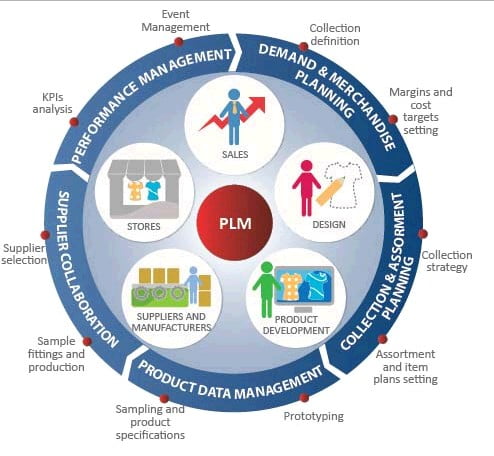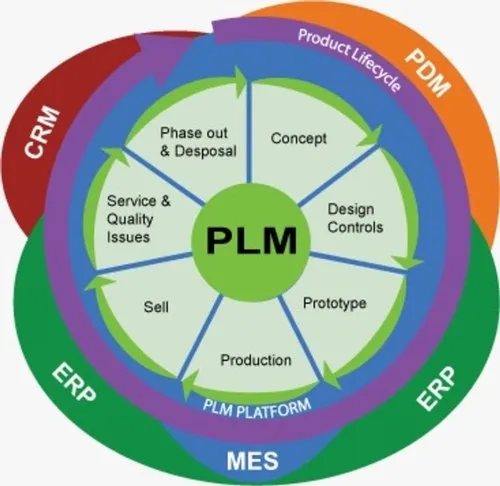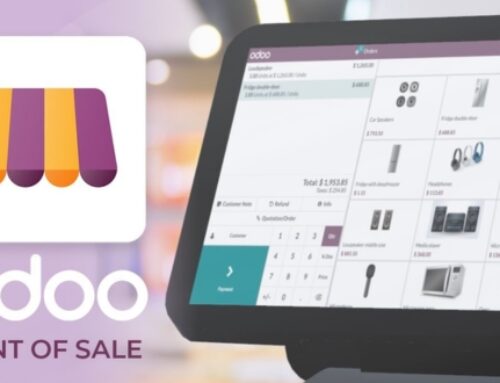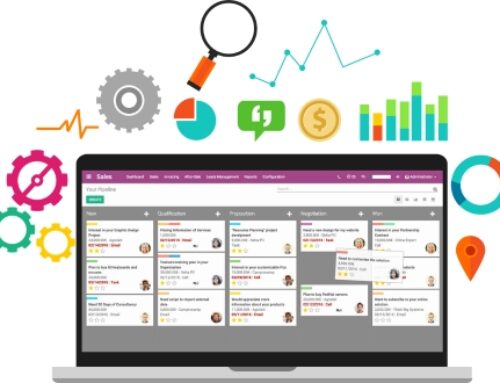Introduction to Odoo PLM
In today’s fast-paced and dynamic business environment, effective Product Lifecycle Management (PLM) is crucial for the success of manufacturing businesses. Odoo, an integrated business management suite, offers a robust PLM solution that streamlines processes, enhances collaboration, and ensures efficient management of product lifecycles. This comprehensive guide will delve into the various aspects of Odoo PLM, from its features and functionalities to its benefits for businesses.
Key Features of Odoo PLM
- Stable Version Control: Odoo PLM provides a collaborative version control system that ensures stability in managing bills of materials (BoMs) before, during, and after production.
- Engineering Change Management: Efficient communication is at the core of managing engineering changes. Odoo PLM harnesses the power of an enterprise social network, facilitating real-time communication across multiple departments.
- Integrated Document Management: Centralized document management for drawings, worksheets, and quality documents ensures seamless information flow throughout the product lifecycle.
- Smart Versioning: Odoo PLM offers smart versioning with efficient diff and merge capabilities, allowing teams to track changes effectively across multiple versions.
- Quality Inspections without Disruption: Quality checks are conducted without interrupting the manufacturing process. Alerts, inspections, and preventive actions are seamlessly integrated into the workflow.
- Customizable Worksheets: Interactive worksheets make it easy to conduct custom quality checks. Employees can efficiently fill out worksheets during inspections, ensuring accuracy.
- Quality Reporting: Detailed statistics about quality checks and alerts provide insights into when inspections occur and the types of defects encountered, empowering businesses to enhance quality control.
- Automated Preventive Maintenance: Odoo PLM automates preventive maintenance by computing standard statistics like mean time between failure (MTBF) and mean time to repair (MTTR). This ensures equipment reliability and reduces downtime.
- Dashboard and Statistics: Predefined dashboards and customizable Key Performance Indicators (KPIs) allow businesses to monitor maintenance operations and analyze performance statistics.
- Tablet Optimization: Setting tablets in work centers optimizes organization and facilitates efficient work processes, providing an ideal tool for maintenance teams.
Benefits of Implementing Odoo PLM:
- Enhanced Collaboration:
Odoo PLM fosters collaboration among different teams involved in product development. Real-time communication and centralized document management improve information sharing and decision-making.
- Version Control for Traceability:
The stable version control system in Odoo PLM ensures traceability throughout the product lifecycle. Businesses can easily track changes, revisions, and iterations, enhancing accountability.
- Efficient Engineering Change Management:
The Kanban process for engineering changes simplifies the management of modifications. Teams can visualize and track changes, streamlining the approval process and reducing the risk of errors.
- Streamlined Document Management:
Integrated document management in Odoo PLM eliminates the need for disparate systems. All relevant documents, from drawings to quality documents, are stored in a centralized location, reducing the risk of information silos.
- Improved Quality Control:
Implementing statistical process control and quality checks ensures that products meet the required standards. The ability to attach documents at specific control points enhances the visibility and control over the quality assurance process.
- Optimized Maintenance Operations:
Odoo PLM’s integration with maintenance operations brings a holistic approach to product lifecycle management. Automated maintenance requests, preventive and corrective maintenance, and comprehensive statistics contribute to improved equipment reliability.
- Efficient Use of Tablets in Work Centers:
The deployment of tablets in work centers facilitates real-time information access for workers. This paperless approach streamlines operations, reduces errors, and enhances overall efficiency on the shop floor.
ODOO PLM: MANAGE THE PRODUCT JOURNEY FROM DEVELOPMENT TO DISPOSAL
PLM software enables manufacturers to strategically manage their product lifecycle, allowing them to proactively navigate through processes rather than merely reacting to ongoing events.
With the Odoo PLM module, users can conveniently access data related to items, components, products, documents, requirements, engineering change orders, and quality workflows from any location and at any time.
The Odoo PLM module serves as a centralized hub, consolidating data and streamlining processes throughout every stage of the product lifecycle, even across complex and globally distributed supply chains. This effectively eradicates data silos and simplifies the management of shared data across extensive supply networks.

What does Odoo PLM offer?
Odoo PLM ensures comprehensive management, facilitating efficient collaboration, quick approvals, and real-time discussions on documents.
Key Features of Odoo PLM:
- Product Data Management:
Centralized access to various product-related information such as technical specifications, manuals, engineering documents, order revisions, Bills of Materials (BOMs), release status, and notes is the foundation of Odoo’s PLM system.
- Quality Control Alerts:
Odoo’s PLM module helps in early detection of quality issues, preventing disruptions in the production line that could lead to resource wastage and increased costs. It empowers cross-functional teams to identify and address product issues, ensuring compliance and preventing delays in product launches.
BOM Management
Effective BOM management is crucial, and Odoo PLM ensures you retain control.
Key Points:
-
BOM Management:
Odoo PLM enables the centralized management and sharing of up-to-date Bills of Materials (BOMs) across procurement, manufacturing, quality, and service departments. This ensures a unified product definition, enhancing overall performance and results.
-
Change Management:
Implementing change management is essential for expediting the time-to-market for high-quality products. Odoo PLM facilitates the tracking of engineering changes through a Kanban process for Engineering Change Orders (ECOs). This establishes a clear thread of traceability throughout the enterprise, preventing delays in product launches, improving product quality, and reducing production costs.
Why choose Odoo as your product lifecycle management software?
- Utilizing intelligent versioning to handle the same data in every department
- Improving teamwork and facilitating real-time communication
- Take total command of each stage of the production process.
- Utilize centralized data sharing to manage engineering changes.
- Prevent backorders and price erosion.
- Superior Administration
- Quicker time to market
- Preventive equipment maintenance should be automated.
ODOO PLM SUPPORTS IN THE FOUR STAGES OF THE PRODUCT LIFECYCLE: INTRODUCTION, GROWTH, MATURITY, AND DECLINE
Furthermore, the platform incorporates specific modules tailored to execute application-specific operations within the company. The manufacturing management aspect of the organization is overseen by the manufacturing and reporting modules, seamlessly integrated with the operations.
Upon entering the module, users are presented with a comprehensive menu detailing the product lifecycle. This encompasses all operations associated with the product life cycle.
Various filtering and grouping options are provided to efficiently retrieve specific data. Additionally, engineering changes related to each operation are comprehensively outlined in this section.
Eco Stage

The stages of engineering modification orders for operations are detailed in the ECO Stages tab, accessible through the configuration window. Within this tab, all stages are clearly defined, allowing users to edit existing ones by applying filters and selecting various options.
To create a new ECO stage, users can choose the “create” option. In the ensuing window, they can provide details such as the name, type, and adjust various available options. Additionally, necessary approvals for proceeding with this order can be assigned.
Herein lies the significance of Odoo PLM (Product Lifecycle Management). The business management platform has implemented a product lifecycle management system to align the manufacturing process of the organization with lifecycle management operations within the company.
ECO Types
The various types of engineering change orders are detailed in the ECO Types menu, accessible from the configuration tab.
To create a new type, provide the name and email domain for the type.
Creating a New Order
Users can generate new orders directly from the summary platform.
To create an order, users can add details, provide a description, assign the type, define relevance, allocate a responsible person, describe effectiveness, outline the product, and allocate tags.
Additional information, such as notes on the order, required approvals, and other relevant details, is outlined. Once the order is defined, users can choose the “Start a New Revision” option to initiate the order.
Subsequently, users can assign documents to the product lifecycle management operations on the order by selecting the available option for document transfer. Documents from the system can be assigned and transferred to the platform.
Various stages of operations and machinery involvement are being designed and documented. The designs are formulated with the assumption of development towards the most suitable values and how workstations can be made more efficient.
MANAGING YOUR PRODUCT’S LIFE CYCLE WITH ODOO PLM
Efficient management of the product lifecycle is crucial for manufacturing businesses, and Odoo provides a unified system to handle this process seamlessly. By recording all product-related data in Odoo, manufacturers gain access to different product versions at any given time, facilitating accurate financial planning. Odoo PLM allows for the maintenance of Bill of Materials (BOM), tracking product lifecycle through engineering change orders, and managing product files.
This feature in Odoo serves as a comprehensive solution to handle product data, BOM revisions, and product lifecycle management. It utilizes enterprise social networks to enhance communication across various departments, enabling streamlined approvals and real-time discussions on documents.
In addition to its capabilities in managing product lifecycle data, Odoo PLM facilitates the creation of Engineering Change Orders (ECO). These ECOs serve several purposes:
- Making revisions to the Bill of Materials (BoM).
- Revising Manufacturing Order (MO) routes.
- Updating attachments for BOM components.
- Generating multi-level approvals from higher authorities for any BoM or Route revision before implementing changes in MO.
- Managing versions of BoM and routing efficiently.
Odoo PLM’s ECO functionality adds a layer of control and precision to the revision process, ensuring that changes undergo necessary approvals and are seamlessly integrated into the manufacturing workflow.
- Configured ECO Type
- Configured ECO Stages
The ECO (Engineering Change Order) process in Odoo PLM involves four stages designed to facilitate multiple approvals:
New: This stage is designated for the creation of new engineering change orders.
In Progress: Reserved for ECOs that are currently in progress, indicating ongoing modifications.
Validate: In accordance with the configured stages, this serves as the final stage where changes are applied based on the ECO selection.
Effective: This stage is employed for confirmed ECOs. Changes can be applied at this stage, marked as the final stage in the settings, and authorized for implementation in the Odoo PLM app.
-
Generating Engineering Change Order (ECO)
Select the ECO type and apply changes based on the designated column. Once the record is generated, proceed by clicking the “Start New Revision” button for further processing.
-
Updating BOM

Utilize the “Update BOM” button to make adjustments to your Bill of Materials (BOM). Once saved, the modifications will be reflected on the ECO form.
After receiving approval, apply the corresponding changes. The effective stage serves as the final step. Drag the ECO to the final stage and implement the approved modifications.
Companies utilizing an ERP system often seek ways to efficiently organize their crucial business unit – the product record. Integration of ERP and PLM systems provides business leaders with comprehensive control over manufacturing processes.
Establishing your manufacturing process with an efficient PLM system such as Odoo PLM minimizes organizational inefficiencies and transition costs. It significantly optimizes the capabilities of each system throughout the entire business. Various Odoo apps, such as Odoo PLM, Odoo MRP, Odoo Quality Management, etc., are available for manufacturing businesses.
ACCELERATE YOUR PRODUCT DELIVERY WITH ODOO PLM
Product Lifecycle Management (PLM) is a technology that functions as a management system, storing and integrating data, business systems, processes, and personnel of the organization involved in a product’s conception, development, launch, and upkeep. It offers fundamental elements to optimize every phase of a project’s lifecycle, from start to finish, while improving communication between internal and external party participants. When it comes to product management, PLM is a key component.
Time-to-market can be shortened, overall costs can be decreased, and rework can be avoided with an effective PLM deployment. This may seem like a technical jargon word, but it has contributed significantly to the exponential acceleration of product releases.
Let’s examine Odoo PLM’s Principal Advantages for All Businesses.
- Product Lifecycle Management solutions are provided by Odoo ERP development services.
- Odoo PLM makes it simple to collaborate with a variety of tools and applications.
- It will enable you to manage and integrate every facet of the company’s expansion and output.
- Social media sites like Facebook, Instagram, Twitter, YouTube, and others can be readily integrated with Odoo.
- It guarantees complete organizational responsibility and advances engineering.
What benefits does Odoo PLM offer your company’s product lifecycle?
Complies with Industry Standards and Compliance
Every business must follow legal requirements before releasing a new product. Failure to abide by these rules could damage the brand’s reputation and harm the company’s industry dynamics.
Odoo guarantees product conformity at every stage of the procedure, including after the product is released and given to clients. Odoo’s careful planning throughout a product’s initial design phase eliminates all risks and ensures success in subsequent phases of the product life cycle, like product marketing and go-to-market.
Increases Productivity and Fosters Collaborations
By assisting businesses in increasing time to market, lowering infrastructure costs, improving product quality, and streamlining operations, Odoo PLM significantly boosts worker productivity.
Odoo consolidates all of the procedures onto a single, expandable platform. Employees can be more goal-oriented and focused thanks to this integration since Odoo removes the need for manual labor, repetitive tasks, and opening several tools or files to find out the most recent project update.
Improved Cost and Production Control
Over time, price erosion and fluctuation have increased significantly, therefore businesses need to develop ways to accurately estimate costs. Odoo PLM makes this easy to achieve. Odoo looks at every aspect of production, including both affordability and longevity. They provide functions including scheduled reporting, real-time dashboards, and a separate feedback system.
By employing techniques for reusing and discouraging customers from purchasing duplicate parts, Odoo contributes to revenue savings. Odoo is an AI-driven PLM system that evaluates all the data required for an organization to monitor its advancement. They are subject to incoming trends or anomalies and are entirely adaptable.
Quick Time to Market
A company’s ability to move quickly can make all the difference in the world. Odoo PLM speeds up manufacturing to the point where completed goods are up to 75% quicker than those of competitors when they reach the market.
These cover every step of the whole production and distribution process. It’s a long journey from gathering raw ingredients to getting client feedback. Teams are able to discuss issues more easily at various phases because of Odoo’s assistance with speedier information exchange.
Enhances Income
Odoo PLM offers us ways to boost revenue for our businesses. A more efficient production method, quality assurance, and cost control would all speed up the process. “Teamwork makes the dream work,” as the saying goes.
Odoo allows coworkers to share the individual workload, increasing productivity and ultimately driving up sales and revenue. Closed feedback systems are included in this customer-focused and customer-friendly software, which aids in the improvement of manufacturing processes and insight-gathering for the various production teams. In today’s world, the secret to success is to learn from your failures.
One of Odoo’s primary goals is to increase income and save money, with an emphasis on overall development rather than on individuals.
Data Exchange
Precise data exchange is crucial for business success, particularly in the quickly expanding technology-driven world. Oddo facilitates simple data sharing and access between geographically dispersed teams, which reduces costs, error margin, and turnaround time.
Both hassle-free and safe is Odoo. Members of the team have the flexibility to switch between teams and clients without compromising any data thanks to features that allow them to log in using their credentials from any device and anywhere.
Centralization
The development process is accelerated by visibility, team productivity, and income production brought about by centralized information and workflows. PLM systems were previously configured based on assumptions, which restricted access and the degree of data sharing. Odoo facilitates real-time cooperation and makes it simpler.
This makes it possible for departments to synchronize like never before. Every team may contribute to product innovations at any stage of the product life cycle with a centralized platform. This is also very helpful for version control when working with other parties, as they can simply obtain the most recent product design without having to transmit numerous files.
Increased Product Quality
Odoo makes it possible to create creative products. Teams get direct access to customer feedback throughout the full product lifecycle thanks to the system’s combination of consumer and product data. Metrics are simpler to monitor, and this data allows for constant improvisation.
Planning and prioritizing are made easy by the data-driven insights that come directly from every team. Product-related issues can be swiftly identified, resulting in quicker marketing.
Design and quality processes go hand in hand and enable teams to be flexible while adhering to regulations.
Oddo PLM has innovated products in an entirely new way. Any company can start from zero when developing a new product concept and still produce a high-quality final product. It will ineluctably raise a product’s worth and enable resource optimization for increased profitability.
In addition to PLM, Odoo features a powerful open-source ERP system that makes it easier to synchronize all of an organization’s activities. ERP for the jewelry industry is a product that is being sold a lot lately. It is useful for many types of organizations, depending on the size and necessity. See this blog post, “Why to Choose Odoo ERP for Business,” for additional information about Odoo ERP.
UNLOCKING THE POTENTIAL OF PRODUCT LIFECYCLE MANAGEMENT (PLM) IN ODOO: ENHANCING PRODUCTION AND DRIVING INNOVATION
Introduction
Efficiently managing product lifecycles is imperative for maintaining a competitive edge in today’s fiercely competitive business landscape. The integration of Product Lifecycle Management (PLM) software into comprehensive ERP modules, such as Odoo Enterprise, plays a pivotal role in optimizing production processes and fostering innovation. Let’s explore the realm of PLM and delve into how Odoo’s advanced system revolutionizes operations to propel growth.
- Embracing the Essence of Product Lifecycle Management
At its essence, PLM involves strategically navigating a product’s journey from ideation to market release, encompassing stages like conception, design, production, distribution, and post-sale maintenance. Odoo’s robust PLM system seamlessly integrates into its ERP suite, offering a multifaceted solution that comprehensively addresses each phase of the product lifecycle.
- Facilitating Operations for Efficiency and Collaboration
A key strength of Odoo’s PLM lies in its ability to enhance collaboration and streamline operations across departments. Teams can easily communicate and share critical information, fostering a culture of collaboration. Centralized data and simplified workflows minimize errors, reduce lead times, and enhance overall efficiency.
- Empowering Product Design and Development
Odoo’s PLM tools excel in product design and development, providing version control mechanisms, comprehensive design history tracking, and integrated project management functionalities. This integration ensures that each step in the design process aligns with precision and quality standards.
- Reforming Inventory Planning and Control
Integrating PLM with Odoo’s inventory module transforms inventory planning and control. AI-driven tools enable businesses to predict demand patterns and optimize inventory levels, minimizing stockouts, reducing excess inventory, and maximizing resource utilization.
- Fostering Innovation
Innovation is fundamental to successful products, and Odoo’s PLM system catalyzes innovation by creating an environment conducive to rapid prototyping, testing, and continuous improvement. Flexible workflows enable businesses to adapt swiftly to market changes, fostering sustained innovation and growth.
- Embracing the Future with Odoo PLM
In the competitive modern business landscape, gaining a competitive edge is crucial. Odoo Enterprise’s integrated PLM system equips businesses with the tools to optimize production processes, foster innovation, and secure a leading position in their respective industries.
Conclusion: Navigating through PLM
Product Lifecycle Management is not merely a process; it’s a strategic imperative for businesses aiming for sustainable growth. Odoo Enterprise’s advanced PLM system empowers businesses by optimizing operations, nurturing innovation, and positioning them for long-term success in a rapidly evolving market landscape.
IMPLEMENTING PLM SOFTWARE FOR EFFECTIVE PRODUCT LIFECYCLE MANAGEMENT
Establishing a robust PLM strategy is essential for the successful management of a production organization and ensuring the highest level of client satisfaction. This becomes even more critical for small-scale producers facing frequent multi-level competition. Without the development of PLM software, meeting various quality requirements necessary for market dominance would be challenging.

Significance of Product Lifecycle Management
Irrespective of their industry or Unique Selling Proposition (USP), businesses of all sizes increasingly rely on Product Lifecycle Management (PLM). A well-executed PLM approach accelerates time-to-market and significantly reduces operating costs. Specialized PLM software is indispensable for the following reasons:
-
Reduction of Human Errors and Enhanced Communication:
PLMs minimize human errors by providing a centrally shared repository, facilitating seamless communication between different teams.
-
Accurate Cost Estimations:
PLMs offer the capability to provide precise cost estimations for various product development processes and predict expected revenue.
-
Streamlined Production Processes:
Specially designed PLM software empowers production companies to easily build, optimize, and manage a product’s production process.
By embracing PLM software development, companies can enhance their efficiency, reduce errors, and navigate the complexities of product development and manufacturing with greater ease.
Advantages of Odoo PLM Software for Production Businesses
Odoo PLM software is a comprehensive solution that empowers production businesses to manage their product workflows holistically, monitor on-site/off-site activities, maintain bill of materials (BOMs), and more. The key characteristics and advantages of Odoo PLM software that position it as the preferred choice for product lifecycle management are outlined below.
- Production Control:
Odoo PLM enables effective management of production workflows, providing flexibility, resilience, and reusability. It enhances the product development lifecycle, accelerates time-to-market, and boosts revenue growth while increasing production capacity.
- Time and Cost Savings with MRP Solution:
The Manufacturing Resource Planning (MRP) solution in Odoo helps estimate the necessary inventory to meet production demand, ensuring efficient operational and financial planning. This leads to faster production processes and timely delivery of results.
- Stronger Partnerships:
Odoo PLM fosters improved team collaboration, significantly enhancing worker productivity. Its integrated dashboard interface efficiently manages various company tasks, including production workflows. The software streamlines information sharing across all production phases, consolidating essential company operations on a single platform.
Odoo PLM stands out for its ability to enhance production efficiency, reduce costs, and promote seamless collaboration, making it a valuable asset for businesses seeking a comprehensive solution for effective product lifecycle management.
PROS AND CONS OF ODOO PLM
Pros of Odoo PLM:
- Integrated Solution: Odoo PLM is seamlessly integrated into the broader Odoo Enterprise suite, providing a unified platform for comprehensive business management.
- Holistic Product Workflow Management: The software allows businesses to manage product workflows efficiently, from conception to delivery, streamlining operations and improving overall efficiency.
- Bill of Materials (BOM) Management: Odoo PLM excels in maintaining and managing BOMs, ensuring accurate and up-to-date information for all stakeholders.
- Collaboration and Communication: The system facilitates collaboration among different teams, promoting real-time communication and minimizing errors through centralized data management.
- Predictive Analysis for Inventory: Integration with Odoo’s inventory module enables predictive analysis, helping businesses optimize inventory levels, reduce stockouts, and enhance resource utilization.
- Innovation Catalyst: Odoo PLM fosters innovation by providing a conducive environment for rapid prototyping, testing, and continuous improvement, enabling businesses to adapt swiftly to market changes.
- Effective Change Management: The software supports change management through the tracking of Engineering Change Orders (ECOs), allowing businesses to apply changes systematically and efficiently.
- Centralized Repository: Odoo PLM reduces human errors by offering a centrally shared repository, ensuring seamless communication between different teams involved in the product lifecycle.
Cons of Odoo PLM:
- Learning Curve: Implementing and learning to use Odoo PLM may require some time and training for users unfamiliar with the system, potentially causing a temporary decrease in productivity.
- Customization Complexity: While Odoo is highly customizable, extensive customization might be complex and may require technical expertise, making it challenging for businesses with limited IT resources.
- Cost of Implementation: The initial cost of implementing Odoo PLM, including training and customization, can be a significant investment for small businesses with budget constraints.
- Dependency on Internet Connectivity: As Odoo is cloud-based, businesses may face challenges if there are issues with internet connectivity, impacting access to critical PLM functionalities.
- Limited Industry-Specific Features: While Odoo is versatile, businesses with highly specialized industry needs may find that certain niche features are not fully addressed within the standard Odoo PLM offering.
In conclusion, while Odoo PLM offers a range of benefits for efficient product lifecycle management, businesses should carefully consider their specific requirements, available resources, and potential challenges before implementation.
CONCLUSION
Odoo PLM stands out as a comprehensive and integrated solution for effective Product Lifecycle Management. With seamless integration into the broader Odoo Enterprise suite, it provides businesses with a unified platform to streamline operations, enhance collaboration, and drive innovation throughout the product lifecycle. The software excels in managing Bill of Materials (BOMs), facilitating effective change management through Engineering Change Orders (ECOs), and optimizing inventory planning through predictive analysis. Despite potential challenges such as a learning curve for users, customization complexity, and initial implementation costs, the overall advantages outweigh these drawbacks. Odoo PLM emerges as a versatile tool suitable for businesses looking to manage their product workflows holistically, promote collaboration, and stay competitive in today’s dynamic business environment.









